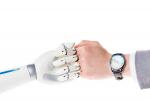CHICAGO — Many of today’s customers are increasingly demanding more convenience in their interactions with businesses such as dry cleaners, and automated kiosks and other technology is making that possible. But can cleaners take advantage of these tools without losing the personal touch that sets them apart from the competition?
In Part 1 of this series, we looked at options available to dry cleaners who want to add more automation to their workflow, and how that balances with the personal touch. Today, we’ll examine how successful cleaners have encouraged their clients to embrace this new way of doing business.
Acceptance by the Consumer
No matter how advanced an automated system is, it won’t matter if customers are apprehensive about using it. By educating them, however, the acceptance level can go up quickly.
“We trained our team to be super-focused on providing more personalized service,” Maggie Fox, owner of Fox Cleaners in Tulsa, Oklahoma. “So, when our customers came to the front counter, we would let them know that the kiosk was now a service that we offer and see if they would like to be introduced to it. Once we took them out there and showed them how to use it and how simple it was, they kind of took it and ran with it. New technology is scary for people, but I think once they’re familiar with it, it becomes very user-friendly.”
Gary Maloney, president and owner of Nu-Yale Cleaners, headquartered in Jeffersonville, Indiana, also focused on ensuring that staff would train customers who wanted to use the new system, walking them through the process if they so desired.
“It’s getting now that they need very little help,” he says. “We get a report from Metalprogetti, and when we first put it in, it was taking customers about two or three minutes to complete a transaction. Now, it’s probably a minute or less. They come in, use it and they’re gone.”
Andrew Rivkin, owner of Embassy Cleaners in Westchester County, New York, believes, however, that not all customers are going to be ready — or willing — to use an automated system, no matter how easy it is to operate.
“There are certainly customers who are not comfortable with the technology, or just prefer to conduct these transactions with the human being,” he says. “And the way that we address that is we accept the fact that some customers don’t want to use our automated systems, and we have no problem at all with this. We are happy to provide both automated as well as fully attended systems in order to work with our customers’ preferences and provide them with what they want.”
Freeing Up Vital Resources
One of the benefits for both cleaners and customers when it comes to automation is being able to free up staff to better serve the client.
“The automation allows our staff to spend more time with the customer who happens to be at the counter in front of them,” Rivkin says, “without the CSR feeling the pressure of a long line. Additionally, the automation allows our staff to provide better communication in a reliable and more timely manner.”
“Our CSRs don’t have to spend as much time waiting on people at the counter,” Fox agrees. “For instance, with the kiosks handling those basic transactions, they can dedicate more attention to our customer requests, care, consultations and resolving any issues that arise. And I think that creates a much higher quality and more personalized experience for each customer, and that’s key.”
These systems can also help customers protect their most precious commodity: time.
“If there’s a line at our front counter when a customer comes in, our kiosk customers appreciate that they can literally skip the line without having to wait for their turn,” Rivkin says. “With the kiosk, it literally takes around one minute to drop off your cleaning and one minute to pick up your orders, which is often faster than the service provided at our counter, so they really appreciate that.”
Come back Thursday for the conclusion of this series, where we’ll look at the value of keeping the lines of communication open with customers. For Part 1 of this series, click HERE.
Have a question or comment? E-mail our editor Dave Davis at [email protected].




















